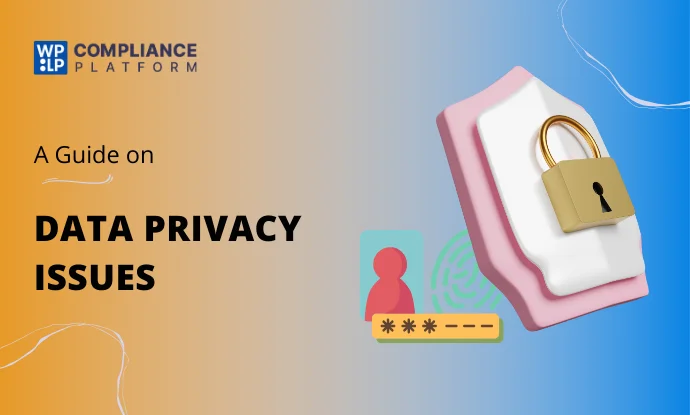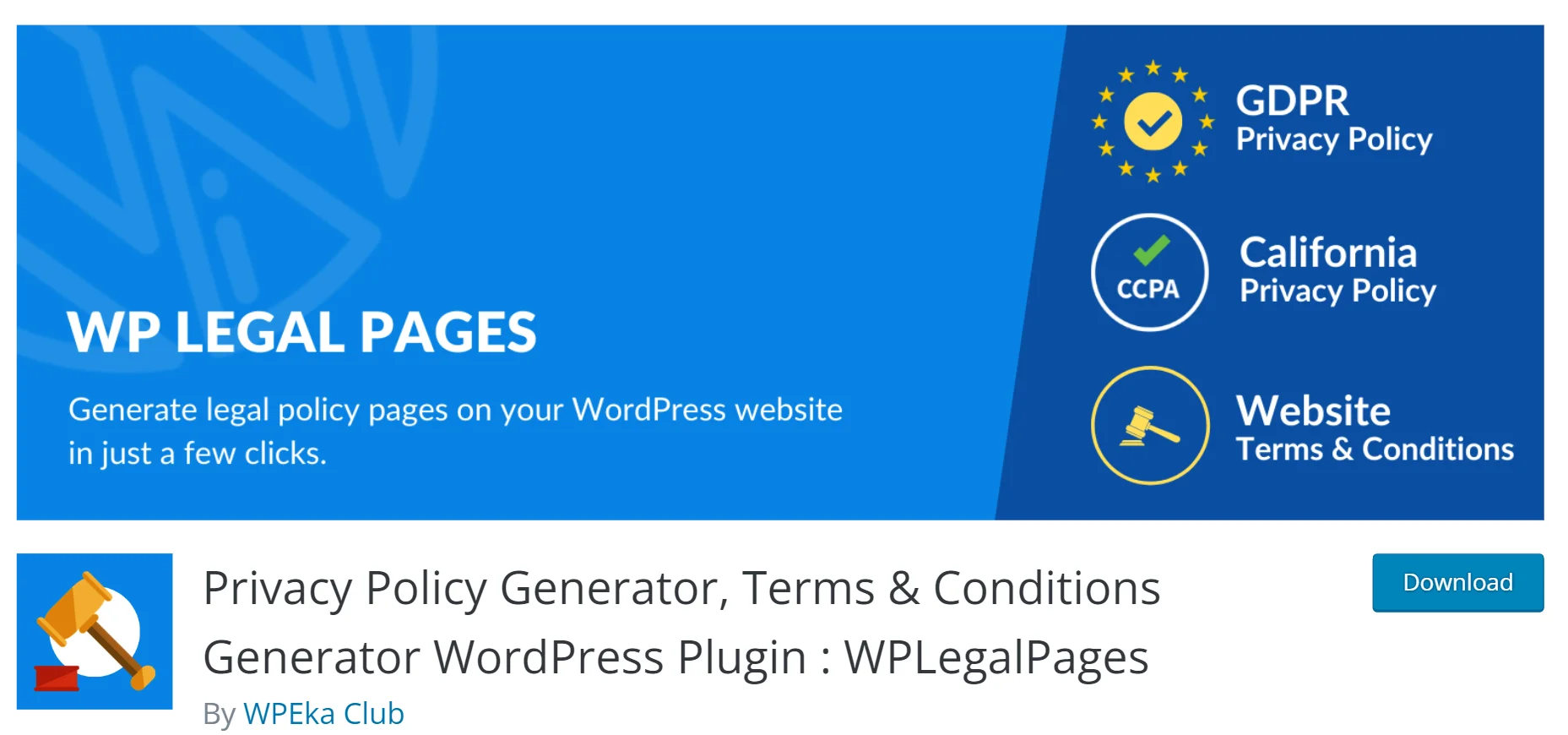10 Data Privacy Issues To Avoid in 2025

Are you aware of the data privacy issues you must avoid when collecting and processing user information on the website?
Data privacy protects individuals’ private information from unauthorized access, disclosure, or use.
Data privacy concerns arise when personal information is collected, stored, and used to violate individuals’ privacy or safety. So, in this article, we’ll discuss data privacy and security issues and the tips for avoiding them.
So, let’s dive right in.
- What is Data Privacy?
- Common Data Privacy Issues
- 1. Lack of Transparent Privacy Policies
- 2. Inadequate Consent Mechanisms
- 3. Insufficient Data Security Measures
- 4. Third-Party Data Sharing Without Consent
- 5. Retention of Unnecessary User Data
- 6. Insecure Payment Processing
- 7. Cookie Consent Compliance
- 8. Cross-Border Data Transfers
- 9. Inadequate User Access Controls
- 10. Lack of Data Privacy Training for Staff
- How Should You Avoid Data Privacy Issues
- Best Solution to Address Data Privacy Issues
- FAQ
- Conclusion
What is Data Privacy?
Data privacy, also called information privacy, is centered around an individual’s ability to control the collection, storage, and use of users’ personal information by organizations.
Businesses often collect sensitive user information like credit card numbers, names, and email addresses.
To protect user privacy in this data-driven world, websites must obtain user consent before processing data, prevent data misuse, and allow consumers to control their personal data.
Under regulations such as the General Data Protection Regulation (GDPR), many organizations are legally required to protect data privacy rights. Despite the lack of official data privacy laws, businesses can still gain from implementing privacy safeguards. Sensitive data can be protected by the same procedures and equipment that safeguard user privacy.
Data privacy issues have been a major concern in recent years. Companies need to use data privacy strategies to comply with regulations and gain the confidence of customers. Here are a few strategies:
- Observe the requirements of any applicable data privacy legislation for your business.
- Find out every piece of personal data that users of your app or website provide.
- Post a privacy statement outlining the types of data you gather and why you do so if you share or sell it to outside parties. The users have rights regarding how they can exercise those rights.
- Post a cookie policy that includes a consent banner and details all the internet cookies your site uses and users’ controls over them.
- Establish and maintain appropriate technical, administrative, and physical security measures to prevent unwanted access to the data.
Common Data Privacy Issues
Let’s discuss the ten most frequently encountered data privacy issues businesses make.
1. Lack of Transparent Privacy Policies
The lack of transparent privacy policies is a major data privacy issue for website owners. Clear and easily accessible privacy policies detailing how user data is collected, used, and shared are key to data privacy.
These policies should also include information about cookies, third-party tracking, and users’ rights regarding their data. Website owners can build trust with users and demonstrate compliance with privacy regulations such as GDPR and CCPA by being transparent about data practices.
2. Inadequate Consent Mechanisms
Obtaining informed consent from users before collecting their data is fundamental to data privacy. Website owners should implement robust consent mechanisms to ensure users understand what data is being collected and for what purposes.
This may include using checkboxes, pop-up notifications, or consent banners that clearly explain data collection practices and allow users to opt in or opt-out according to their preferences. Without proper consent mechanisms, website owners risk violating privacy laws and facing penalties.
3. Insufficient Data Security Measures
Data security is essential in protecting user information from unauthorized access, breaches, and cyberattacks. Website owners must invest in robust security measures such as encryption, firewalls, secure hosting, and regular security audits.
Additionally, implementing secure coding practices and staying updated on security patches and updates can help mitigate the risk of data breaches. Failure to implement adequate security measures can compromise user data and damage the website’s reputation.
4. Third-Party Data Sharing Without Consent
Sharing user data with third parties without explicit consent can intrude upon users’ privacy rights and break users’ trust. Website owners should disclose any third-party data-sharing practices in their privacy policies and obtain consent from users before sharing their data for marketing or other purposes.
To mitigate risks associated with data sharing, it’s crucial to carefully assess third-party vendors’ data privacy practices and ensure they comply with applicable regulations.
5. Retention of Unnecessary User Data
Collecting unnecessary user data poses significant privacy risks and increases the likelihood of data breaches. Website owners should regularly review and cleanse outdated or irrelevant user data to minimize the impact of potential breaches.
Adopting data minimization practices, where only necessary data is collected and retained, can help reduce the risk of unauthorized access and mitigate compliance obligations associated with data retention regulations.
6. Insecure Payment Processing
Websites that handle financial transactions must prioritize secure payment processing to protect users’ sensitive payment information. Implementing robust encryption protocols, using secure payment gateways, and complying with industry standards such as the Payment Card Industry Data Security Standard (PCI DSS) are essential to safeguarding payment data.
Website owners should also regularly monitor payment processing systems for vulnerabilities or suspicious activities to prevent data breaches and maintain user trust.
7. Cookie Consent Compliance
Cookies are commonly used for tracking user behavior and preferences, but their use must be transparent and compliant with data privacy regulations. Website owners should obtain explicit consent from users before deploying cookies and provide options for users to manage their cookie preferences.
Implementing cookie consent banners or pop-ups that clearly explain cookie usage and allow users to accept or reject cookies is crucial for compliance with privacy laws such as GDPR and the ePrivacy Directive.
You can use WP Cookie Consent tools to comply with global laws and obtain explicit consent from users to collect data.
8. Cross-Border Data Transfers
Transferring user data across international borders can introduce complexities and privacy concerns, especially if the destination country lacks adequate data protection laws. Website owners must ensure compliance with regulations such as GDPR when transferring data globally.
This may involve implementing data transfer mechanisms such as Standard Contractual Clauses (SCCs) or obtaining user consent for cross-border data transfers. Additionally, conducting due diligence on data processing partners and ensuring they adhere to relevant privacy regulations can mitigate risks associated with cross-border data transfers.
9. Inadequate User Access Controls
The most common data privacy issue website owners make is providing inadequate user access controls. Strong user access controls are essential to prevent unauthorized access to sensitive data.
Website owners should enforce authentication measures such as multi-factor authentication and role-based access control to limit access to user data based on users’ roles and responsibilities.
Regularly reviewing and updating access permissions, revoking access for former employees, and monitoring user activities can help mitigate the risk of unauthorized access and data breaches.
10. Lack of Data Privacy Training for Staff
Employees play a crucial role in safeguarding user data, and adequate training on data privacy protocols is essential. Website owners should conduct regular training sessions to educate staff about data privacy policies, procedures, and best practices.
This may include training on handling sensitive information, recognizing spam attempts, and responding to data breaches. By investing in staff training, website owners can enhance employee data security awareness and mitigate the risk of data privacy violations caused by human error.
How Should You Avoid Data Privacy Issues
After reading about the most common data privacy issues that companies face, you must be wondering about how to avoid them.
Here are several ways to address data privacy issues:
- Have strong data privacy plans: If your company has clear, strong, and transparent plans for data privacy that inform users about the data collected and its use, it will build trust, create goodwill, and make users feel secure.
- Recognize the laws that apply to your company: Even if you unintentionally break a data protection regulation, you could be held financially liable; thus, it’s critical that you correctly identify all applicable laws for your company.
- Allow space in your budget: When creating your budget, it’s critical to consider your cybersecurity and data privacy needs in the current digital context. Otherwise, you might have to pay more for a cyberattack or a legal penalty.
- Collect personal data you need: Depending on the regulations that apply to you, hoarding useless data could be illegal and put you in danger of cyberattacks.
- Be smart regarding quickly advancing technologies: while new technology is fascinating, use caution while putting it into practice. Don’t forget to weigh the advantages and disadvantages, and utilize only software you can rely on.
- Educate all staff members, including yourself: Power comes from knowledge. Ensure administrators and other staff members at your organization have received the necessary training to reduce human error.
- Turn off location tracking: To stop competitors from accessing company data, turn off location services on all devices.
- Reduce devices: Decrease the number of devices accessing your data and prevent employees from using their personal devices to access work resources.
- Make enough SOPs: Identify the weak points in your internal processes, draft new SOPs, and instruct staff on adhering to them.
- Don’t accumulate data: Regularly delete out-of-date digital records; save hard copies in a secure location when in doubt.
Best Solution to Address Data Privacy Issues

Wide-ranging data privacy problems can seriously threaten a company’s financial stability, user privacy, and sensitive information.
WP Legal Pages allows you to build a privacy policy that safeguards your company’s reputation for data privacy concerns. This free privacy policy generator tool can help you reduce risk and gain users’ trust.
WP Legal Pages plugin provides pre-designed templates that help you create a privacy policy in minutes. It also helps you to comply with changing privacy laws and regulations. If you want to improve your data collection and data privacy issues, then WP Legal Pages plugin can help.
We have a Consent Management Platform (CMP) called the WP Cookie Consent plugin, which includes a cookie consent banner, preference center, and Data Request form.
You can customize the consent banner to comply with the opt-in or opt-out requirements of different regions worldwide, such as California and Europe.
FAQ
Data privacy problems include unauthorized access, data breaches, and misuse of personal information. Solutions such as strong data encryption, transparent privacy policies, regular security audits, and data minimization can help address these challenges and protect personal data effectively.
Conclusion
As digital technology advances, increasing methods are available to gather customer data. However, prioritizing data privacy will help your business succeed in the long term. Knowing data privacy protection can simplify your data privacy process and reduce risks.
While achieving legal compliance and avoiding data privacy issues to protect customer data. It is equally important to safeguard consumer data. To avoid database privacy issues, it’s important to stay up-to-date with solutions.
Use WP Legal Pages to create your website’s privacy policy and WP Cookie Consent plugin to inform users about data collection through cookies.
If you liked reading this article, don’t forget to read our other engaging articles:
- Most Common Privacy Policy Issues To Avoid
- Best Terms And Conditions Generators – A Detailed Review
- Digital Markets Act: What Website Owners Need to Know
Are you excited to create a privacy page for your website? Grab WP Legal Pages now!
